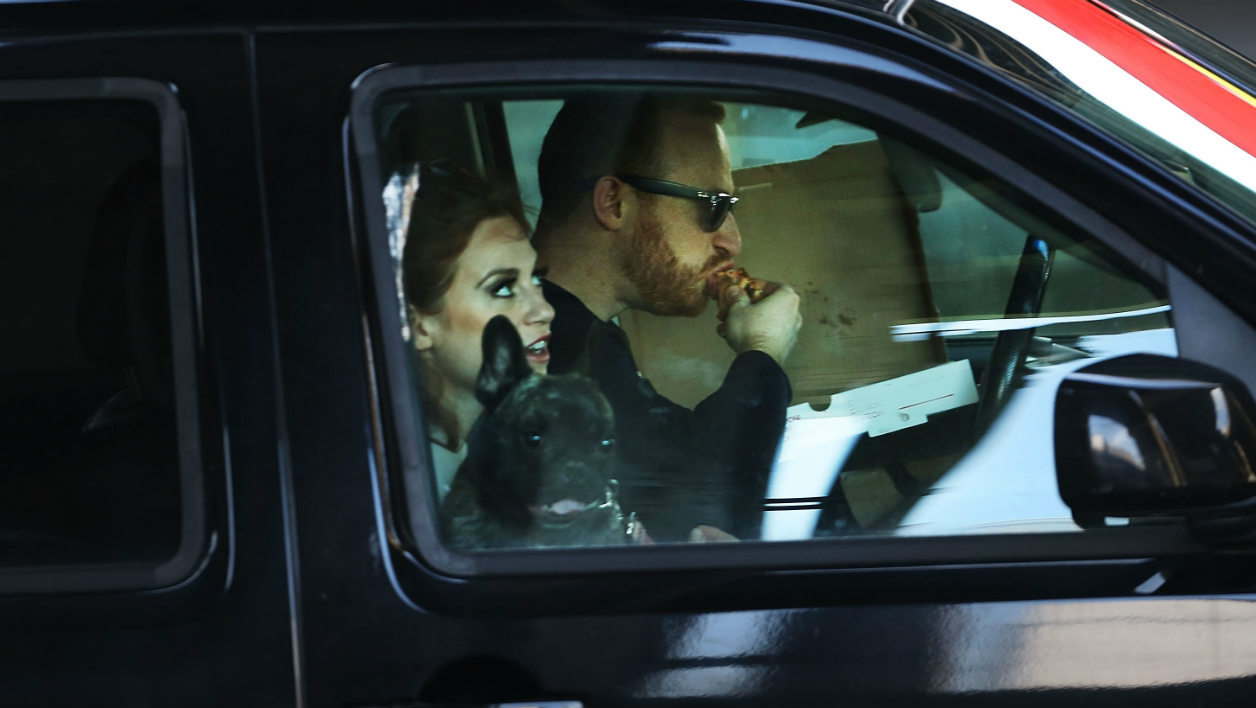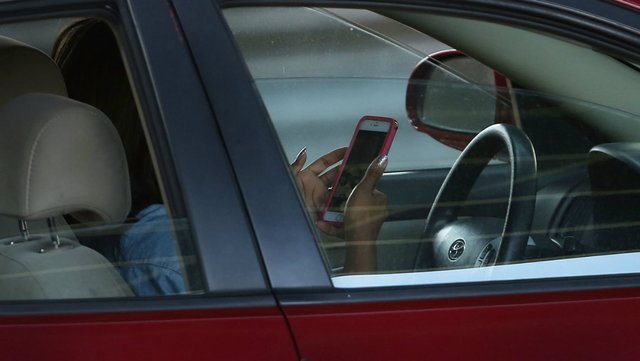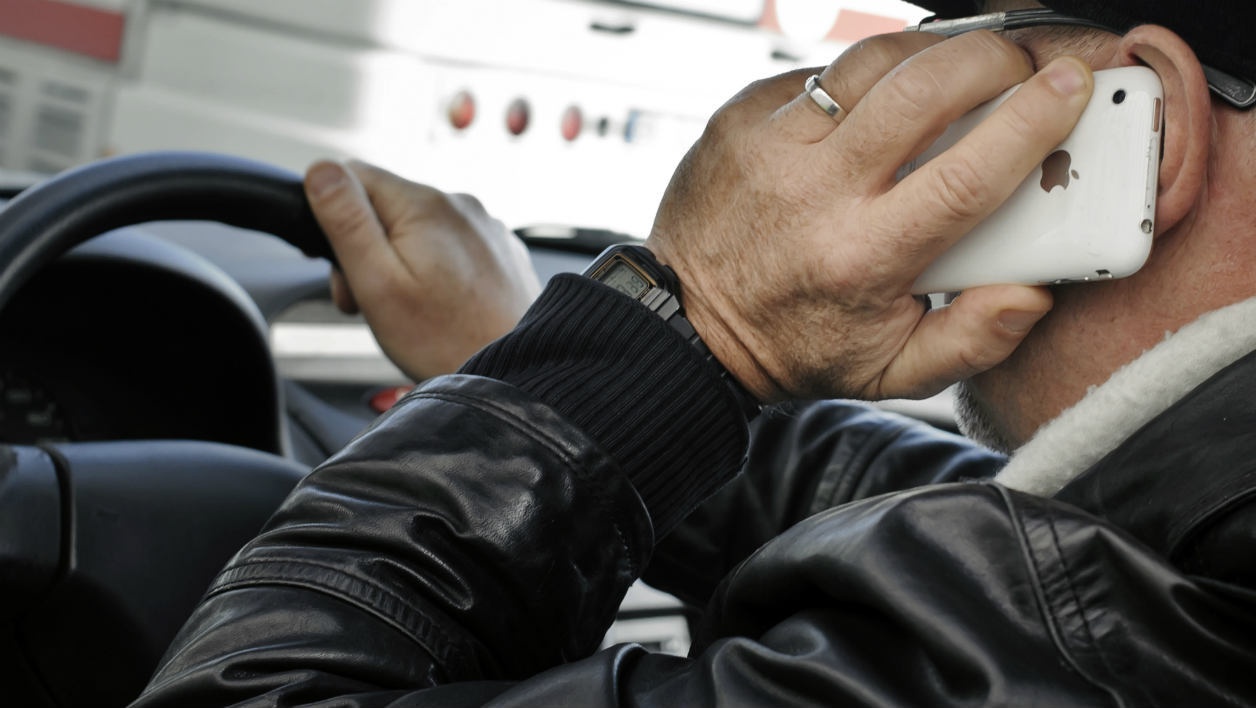Apart from driving, what the Highway Code allows you to do while driving

As a driver, you can eat a sandwich by rummaging through the glove compartment with the music in the background. But preferably not all three at the same time seen that you are supposed to remain master of your vehicle at all times.
Since 1 July, drivers may be fined 75 euros if they are caught eating while driving or listening to music at an unreasonable volume in the passenger compartment. From exchanges of posts on social networks to various reports on major media, bans have made motorists jump ... and Road Safety. None of the measures cited is actually new, and some provisions supposedly entered into force in fact do not exist at all.
Fantastic bans ...
In detail, for example, were mentioned: prohibitions on eating, rummaging in the glove compartment or applying makeup, which would have become new offenses on Saturday, all of which would be subject to a fine of 75 euros and a withdrawal Of 3 points. Other false information: listening to music with a volume too high would now expose you to a fine of 75 euros.
In reality, however, all the measures mentioned above are purely fanciful, as Road Safety has stated in a series of messages posted on the evening of 1 July and retrieved by the official account of the Ministry of the Interior.
"No section of the Highway Traffic Act specifically mentions a ban on listening to music, eating a sandwich or looking for something in the vehicle's glove compartment," the Road Safety delegation said in its release Sunday.
And others that do not date from yesterday
Other measures, also relayed abundantly in the same publications, exist well, but do not apply since this Saturday July 1st.
This is particularly the case of the penalty for the use of a telephone while driving (3 points and 135 euros of fines), a tightening that took place in January 2012. The decrease in the BAC Novice drivers at 0.2 g / L "entered into force two years ago on 1 July 2015" and "the prohibition of a screen in the field of vision of a driver is included in the Code of The road since 2008 ", recalls the Road Safety.
The only really new measure since July 1 was the standardization of license plates for the two and three motorized wheels and the quads.
False information massively shared
But how could these false information have been so relayed? Everything would have started from a communiqué sent last Friday by a communication agency. The message highlighted these so-called new measures to present the results of a study of driver behavior conducted by an insurer. "We relied on an article published by one of the leading media in the automotive sector, but without thinking that it could contain false information," explained the person behind The release of the communiqué.
One rule: to remain in control of one's vehicle
Confronted with these same rumors of new regulations, we had recently exchanged with the Ministry of the Interior on the current Highway Code, as well as possible future developments. He was simply reminded of the terms of the second paragraph of article R412-6 of the Code of the Road, which frames the general behavior of the drivers:
"Every driver shall be constantly in a position and in a position to perform all maneuvers which are conveniently and promptly, and his or her range of motion and field of vision shall not be reduced by the number or position of the passengers, The objects transported or the affixing of non-transparent objects to the windows ".
And it is true that by eating, applying makeup or searching the glove compartment, a police officer could indeed invoke this article to verbalize you, but in case of "inappropriate and dangerous behavior," says the ministry. In this case, the offender is liable to a fine of the second class, ie 35 euros.
A rumor already seen in 2015
It is finally the vagueness surrounding this article R412-6 that makes this false information on the new prohibitions comes back quite regularly. In 2015, for example, this article of the Mirror warned the British that it was now forbidden in France to eat at the wheel. Make-up and listening to too loud music were also mentioned
Téléphone en voiture: ce qu'il est vraiment interdit de faire

Nine French out of ten use their smartphone while driving in the same way as on their sofa. If it is strictly forbidden to hold your phone in a car, make a call or use it as a GPS is permitted. Small point on a regulation in full evolution.
Since 2003 in France, "the use of a telephone held by the driver of a vehicle in circulation is prohibited," specifies the Highway Code. However, after observing more than 20,000 cars, a Study of Road Safety shows that nine out of ten French people use their smartphone while driving, from calling handset to SMS consultation. The use of the telephone as GPS or that of the hands-free kits are allowed. What legislation applies to the phone in the passenger compartment?
Telephoning, mobile in hand: 135 euros
The rule is simple: under no circumstances should the driver handle his phone when driving, to make a call as if to take a look at a text message or something else, according to the Code article. Route R412-6-1.
The offender is liable to a fine of 135 euros and a withdrawal of 3 points on the driver's license. According to Le Parisien, 318,000 drivers were verbalised in 2015 for the use of the telephone in hand at the wheel, and the sanctions could become more severe in the coming months.
The hands-free kit, yes, headphones, no
To make a call from its interior, the only solution remains the hands-free kit. Be careful, it is not the small headphones (white among others) provided with the smartphone, even if you carry only one of the two earphones. Helmets such as Bluetooth headsets or earbuds are prohibited since 2015.
If you phone while driving, headphones in the atria, the penalty will be the same: a fine of 135 euros and a withdrawal of 3 points on the driver's license.
The only authorized hands-free kits are those which do not require an earpiece or a helmet, such as the system integrated into the infotainment device of the vehicle, for example a small Parrot type box with integrated microphone and loudspeaker or GPS, as many device to which the phone is connected in Bluetooth.
"You should not touch your phone when you're driving," explained Nathalie Irisson, Attitude Prévention's general secretary a few months ago, and go to airplane mode to avoid disturbance (a simple alert SMS can divert attention.) It is also the responsibility of the caller to stop it as soon as he knows that his caller is driving.
The phone as GPS: yes, but be careful
Waze and other driving assistants brought the smartphone back into the limelight: the phone now acts as a GPS. "These driving aids on the smartphone are not prohibited, but you have to be careful," explains Christophe Ramond, Director of Studies and Research at the Prévention routière, "plan the route of the GPS before leaving, not to have to handle the phone Once behind the wheel ".
Road Prevention is also cautious about reporting incidents on the road by applications. They are not prohibited, but drivers must be cautious, as these reports are precisely in areas of risk.
The "car mode", an alternative
Christophe Ramond said: "It was a good idea to turn off your phone while driving, and nobody is ready to follow this advice. A hands-free kit, not to manipulate his mobile, and to learn to restrict himself, for example the driver can use the car mode that is found on different models, such as aircraft mode.
The association Prévention Routière thus advises the use of applications such as OneTap or Driving Mode, an application launched by Road Safety, which filters calls and sms, informing your correspondents that you are unavailable and avoiding untimely rings. And thus the deconcentration of the driver.
Les Français accros au smartphone au volant

According to an unprecedented study of the association Prevention Routière, conducted for 3 months on more than 20,000 drivers, too many French people still use their smartphone while driving.
The French do not let go of their smartphones even at the wheel. According to a study * of the association Prévention Routière published on May 30, 9 out of 10 French people use their smartphones while driving. 7% phone without handsfree kit, smartphone in hand, while driving. A figure that goes up to 13%, in stoppers or the red light, where motorists recover the precious object as soon as they have the opportunity ...
And if they do not call, a third of drivers use their mobile phone while driving, whether to check their email or to take a look at a text message. So many behaviors strictly forbidden: in no case a driver must hold his laptop in hand in car.
Using his phone while driving is fined 135 euros and a 3 point withdrawal on the license because it is simply dangerous. If this study is the first of its kind for the association, the generalization of smartphones as 4G in the daily life of the French is also (and not surprisingly) behind the wheel, stress the authors of the study.
Read more: Road safety: new campaign on buses against the telephone at the wheel
Reaction time up, zigzag on the road
"In 9 of the phone's 10 uses, the telephone is manipulated, and in addition to a mental distraction, this manipulation results in a visual distraction," said Christophe Ramond, director of studies and research at the Prévention routière. With both hands on the wheel, is no longer looking at the road, and it is often in the most risky moments, such as in times of heavy traffic, that drivers take their phones in their hands.
"Other acts of everyday life are at risk, and we do not take his phone," said RTL Anne Lavaud, general delegate of the association Prévention Routière. Sending a text message by taking out a dish from the oven or making a hole with a drill ".
Telephoning on the steering wheel increases the reaction time of the driver, up to 70%. Trajectories are also less precise. When the driver looks at his phone rather than the road, the vehicle tends to zigzag. According to a 2016 study by the National Highway Traffic Safety Administration (NHTSA), the US Road Safety Agency, sending an SMS while driving increases the risk of accidents by 23. "10 people a day are injured or killed because of the phone at the wheel," Eric Lemaire, president of Axa Prévention, told RMC.
In his study, Prévention Routière noted that pedestrians and cyclists are also concerned by this banalization of the telephone, the nose on their screen, particularly through crossing or sending SMS messages with one hand while holding the handlebars of the other. "The fine also applies to cyclists," he said.
Young drivers use their smartphones too much at the wheel
83% of 18-24 year olds use their phones while driving, reveals the latest AXA Prevention barometer. A factor that greatly increases the risk of accidents.
Young drivers have taken the bad habit of driving with their smartphones at hand, and especially not being able to resist using them. This is revealed by the latest AXA Prevention barometer, unveiled exclusively by our colleagues at RMC.
83% of 18-24 year olds say they use their phone while driving, compared with 48% of all motorists. The young people do not hesitate to make calls (43% against 30 on all motorists), to send or to consult SMS (43% vs 15%) and mails (7% vs 3%) or to use A mobile gaming application (4% vs 1%).
An important risk factor
If young people are exposed to a fine and a loss of 3 points, which is half the total available for probationary licenses, this is a major risk factor. A figure to realize: according to the Road Safety, the smartphone at the wheel is 10 people killed or seriously injured every day.
Recently, a US study showed that sending or viewing a SMS while driving was 23 times more likely to cause an accident. The success of the Pokémon Go game launched last summer had also sparked a wave of unsafe behavior on the road, with pedestrians absorbed in their phones as they crossed and drivers continuing to hunt Pikachu and others behind the wheel. To sensitize the motorists, some were able to see this kind of message on the motorway signs: "the one who drives is the one who does not play"